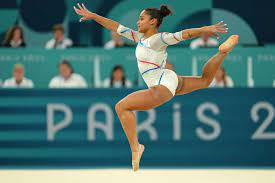Gymnastics for Kids: Why Winter Break is the Perfect Time to Start
If you’re wondering whether a winter school holiday program is the right time to introduce gymnastics for kids — the short answer is yes. Not only does gymnastics keep children active during chilly days, but it also builds strength, coordination, and confidence while school is out. With structured programs led by experienced coaches, kids can develop new skills, make friends, and burn energy in a fun, supportive environment.
Why Are Winter Holiday Gymnastics Programs So Popular?
Winter can be a difficult time for parents trying to keep kids engaged. Cold weather and shorter days often mean more screen time and less physical movement. That’s where gymnastics steps in.
Here’s why these programs are in demand:
- Indoor activity: Protected from the elements and fully climate-controlled
- Structured learning: Focused sessions run by certified coaches
- Skill development: Kids don’t just “burn energy” – they build balance, strength and discipline
- Confidence boost: Learning new techniques improves self-esteem
- Fun meets fitness: Kids stay active in a setting that feels like play
What Skills Do Kids Learn in Gymnastics?
Gymnastics for kids is about more than flips and cartwheels. The winter program introduces a broad range of movement patterns and physical foundations.
Children typically develop:
- Gross motor skills (e.g., jumping, running, balancing)
- Fine motor control (important for hand placement and precision)
- Core strength (through static holds, bridges, and tumbling)
- Flexibility and coordination
- Teamwork and patience (especially in group settings or circuit-based classes)
Each of these benefits contributes to a child’s overall physical literacy — giving them a solid base for other sports and life activities.
Is Your Child a First-Timer? Winter’s the Ideal Start Point
If your child hasn’t done gymnastics before, the winter break offers a low-pressure introduction. Unlike full-term commitments, holiday programs are short, affordable, and trial-friendly.
This can be especially valuable for:
- Children who are shy or hesitant to try new activities
- Parents looking for screen-free alternatives over the holidays
- Kids who want to explore different sports before term begins
Programs are typically grouped by age and ability, so every child gets the attention and challenge level that suits them. Plus, the fun atmosphere of a holiday program — with themed activities and games — keeps things playful.
How to Choose the Right Winter Gymnastics Program?
A high-quality program should feel welcoming, safe, and well-organised. Look for the following when deciding where to enrol your child:
- Accredited instructors with Working With Children checks
- Structured warm-ups and cool-downs as part of every session
- Diverse equipment use: beams, bars, mats, trampolines
- Clear communication with parents about session times and outcomes
- Small coach-to-child ratios
You might also want to ask about progress reports or certificates — these can give kids a sense of achievement and motivate them to continue.
What Makes Gymnastics Great for Winter?
Aside from the obvious appeal of being indoors during colder months, gymnastics has some distinct advantages over other sports during winter:
- Low injury risk compared to high-impact outdoor sports
- Boosts immunity through regular movement
- Routine-friendly — programs often run in the morning, leaving the rest of the day free
- Helps with post-holiday school transition, keeping minds and bodies active
Plus, many gymnastics programs use winter as a time to introduce new skills or routines, meaning kids who participate during the holidays often start the school term ahead of their peers.
Can Gymnastics Support Mental Wellbeing?
Absolutely. Physical activity during school holidays isn’t just about staying fit. Gymnastics offers a positive emotional outlet for kids.
Here’s how:
- Reduces anxiety through structured movement and breathing
- Increases social interaction, especially important for kids prone to isolation
- Improves focus and discipline through skill-based repetition
- Fosters independence as kids try new movements on their own
According to the Australian Sports Commission, children who engage in regular structured sport are more likely to report higher life satisfaction and social confidence.
Quick Checklist for Parents
Before enrolling your child in a winter gymnastics program, consider the following:
- Have you checked the age and skill suitability?
- Is the venue close enough for convenient drop-offs and pick-ups?
- Does your child have comfortable athletic clothing (e.g. leggings, fitted tops)?
- Have you asked about trial classes or first-timer specials?
Being prepared helps reduce stress on the first day and ensures your child has the best possible experience.
Frequently Asked Questions (FAQs)
Is gymnastics safe for younger children?
Yes. Reputable programs structure classes by age and ability. Soft mats, padded equipment, and professional supervision make gymnastics one of the safest indoor activities for kids.
What should my child wear to gymnastics?
Fitted clothing like leggings and a stretch top work best. Avoid loose garments, jewellery, or anything that might get caught on equipment. Most venues also ask for bare feet or grip socks.
Can my child join midway through the holidays?
Many programs offer flexible enrolment. It’s best to call ahead — some centres welcome mid-week joiners if spaces are still available.
Final Thoughts
Winter doesn’t have to mean hibernation. A structured gymnastics program can turn your child’s school break into a season of growth, movement, and memorable fun. Whether your little one is a beginner or has some experience, gymnastics for kids provides a dynamic way to stay engaged and energised during the coldest months.
If you’re looking to enrol your child in a structured, skill-based activity this winter, you might also be interested in this junior sports program that encourages all-round development.

